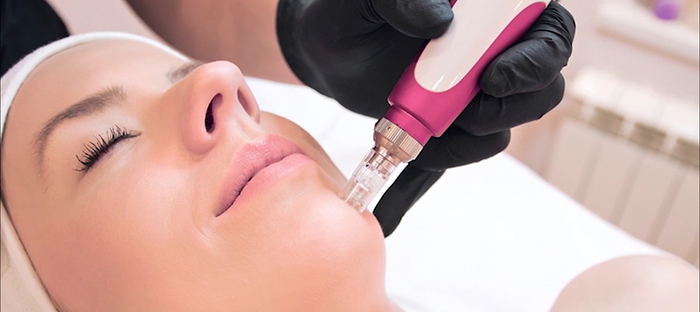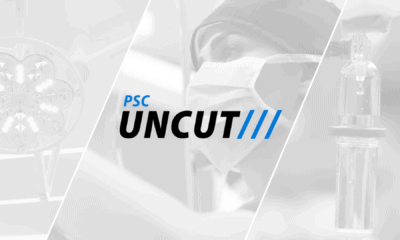The Holy Grail for non-surgical cosmetic procedures is certainly skin tightening. Many of the problems that need correcting because of age centers around skin tightening – especially when it comes to the face and neck. Now that numerous non-surgical devices have emerged to help with fat removal (kicking open the door for a new population of patients), many are waiting patiently to find the non-surgical device that will effectively tighten the skin.
While lasers have been around for decades, they still can only really do so much. The advent of radio frequency energy in recent decades offers a new way to tighten the skin, but it, too, can only tighten so much. Board certified plastic surgeons Dr. Brooke R. Seckel of Boston and Dr. Lee Thornton of Mississippi discuss where the field is at in terms of non-surgical skin tightening procedures and what may be around the corner to solve this dilemma.
Lasers and Radio Frequency – Energy to Tighten Skin
When it comes to skin tightening without skin removal, surgeons have one option: energy. Much like the skin of chicken tightens up when heat is applied in the skillet, laser and radio frequency (RF) devices aim to heat skin to a point of contraction. How much energy applied is important, because too much can cause more damage than the devices seek to correct.
A small window of effectiveness does exist, but it really depends on the amount of skin that needs to be tightened, and where. “Laser has been around for many years and has a lot of uses in medicine, especially in plastic surgery,” shares Dr. Thornton. “Radio frequency came out a little later than that and we’ve been using it for different applications for many years. I think you really have to decide what you’re trying to accomplish and what device does it best.”
Dr. Seckel is more to the point: lasers and RF can only do so much. “We’ve been trying since 1995 to tighten skin without surgery,” he details. “The honest answer is, you still need surgery to significantly tighten the skin.”
The New(er) Kids on the Block: FaceTite and RF Microneedling
When energy is applied to the exterior of the skin, there exists a certain amount that can be applied before more damage is caused than desired. In order to tighten loose skin and deep wrinkles is to get that energy deep into the dermis, a situation where the external part of the skin is taking all of the energy, too. Penetrating the exterior to get deep enough is not very effective.
There are, however, some newer devices that seek to solve this problem. One is called FaceTite (it’s version of the body is called BodyTite). This device utilizes the same energy, but also has a probe that goes beneath the skin. The energy between the fiber and the part of the device on the skin’s surface synergize to provide deeper tightening. “The thing that has the most promise for tightening the skin is these new devices that you place a little fiber underneath the skin,” explains Seckel. “Then you’re getting down to where you can actually tighten the skin.”
Beyond BodyTite, everyone from surgeons to teenagers are becoming familiar with the concept of microneedling. In it’s most basic form, a microneedling procedure is a roller with tiny needles that pierce facial skin. While looking and sounding medieval, microneedling actually stimulates the skin to turn over dead cells and to build new collagen. This process is loosely similar to the concept of aerating a lawn, where one punches a pattern of holes into the grass to stimulate growth.
Beyond the at-home microneedling set-up, surgeons have discovered that applying energy to the microneedling process can ramp up it’s effectiveness. Devices now exist to send energy in with the needles, and the results are significant.
“One radiofrequency device that I’ve had experience with is RF microneedling, where the needle pierces the skin and pulse of RF goes down deep where it can do some good,” explains Seckel. “You can’t do that with a laser. So in that sense, RF is a little safer in that the laser has the heat the skin before it gets deep and can burn you, whereas RF with the needle, you can get the energy down deep without burning the skin.”
Patient Selection is Always the Most Critical
Everyone would love to avoid a facelift and have a device zap that skin right back where it was 30 years ago. Unfortunately, the tech isn’t exactly there. That said, there are many situations where a patient might significantly benefit from the growing devices on the cutting edge.
“I think we’re making advances; it’s better than it was and safer than it was 20 years ago, but Dr. Seckel is right, we haven’t found the magic bullet,” says Thornton. “When we’re looking at skin, it’s a complex issue with patients. If you’re looking at tightening deep wrinkles and moving heavier structures, then I think the under-the-skin devices are the only ones doing that. I think we’re seeing some really good results and promise, and not only in the face and neck, but the body.”











Facebook
Twitter
Instagram
YouTube
RSS